| Fred's foster-parent: | | Name: | Christoph | | Profession: | 2nd Engineer | | Nationality: | German |
Fred's vessel: | | Vesselname: | Gaschem Adriatic | | Callsign: | A8VA6 | | Flag: | Liberia | | IMO No.: | 9402586 | | Vesseltype: | Gastanker (LPG/C) | | Length: | 155,64m | | Beam: | 22,75m |
| Fred-Report:
Hi,
today I share the news from the most busiest sailing area in the world: Singapore! Yes, we are there once again for discharging our cargo. And: The football virus hit us as well because of the ongoing world championship! On board it is not so easy to watch the games! But in Singapore we were able to see Germany versus USA live! Early morning but who cares about that!
This week I have been once again in the “basement”, eh I mean the engine room! On an auxiliary engine I watched the crew fixing an attached pump. But before I show the pump you see on the following pictures one of the auxiliary engines with the alternator.
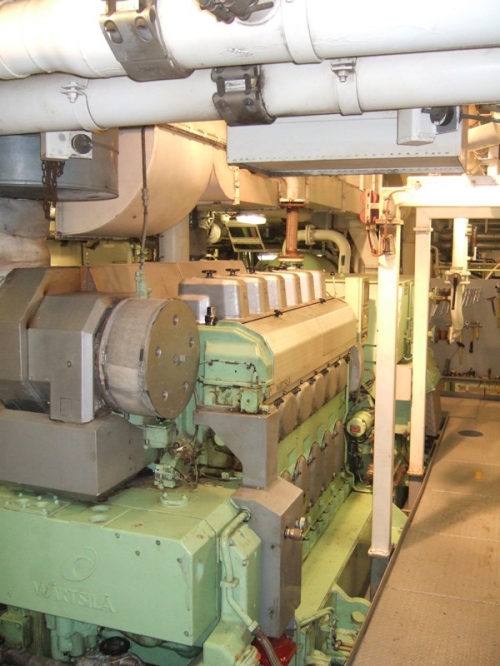
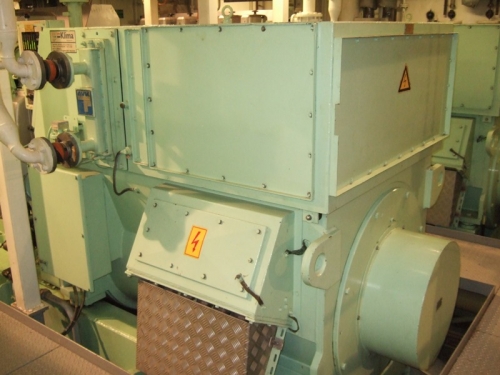

Here you can see both attached pumps, one for the low temperature (40°C) the other one for the high temperature (80°C). The guys had to fight hard to reach them!
Below those two pumps you see a green one, this is the attached lub oil pump. Hmm, what means attached? I will explain it! The pump only works when the engine is turning – if the engine is stopped the attached pumps will not work either and pump water or oil through the engine. The pumps are connected with a shaft and gear wheels to the engine. One of the gears you can see on the next picture.
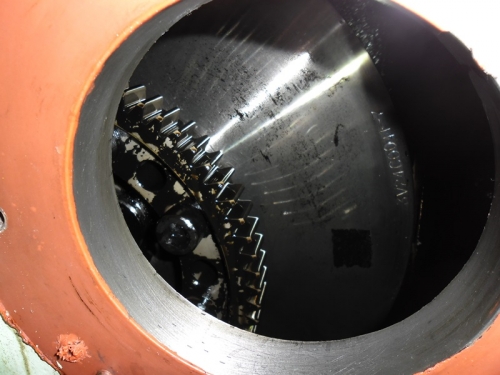
In the engine room are a lot of pipes mounted! On pictures of my last reports you could see already many of them! Quite confusing? How does the crew know what kind of liquid is flowing through each pipe? Is it lub oil, heavy fuel oil, gas oil, compressed air, water, sewage or refrigerant? Unfortunately there are no sight glasses which allow you to have a look inside! Therefore exists a colour code, or as it is on board Gaschem Adriatic, stickers which identify what liquid flows through this pipe!
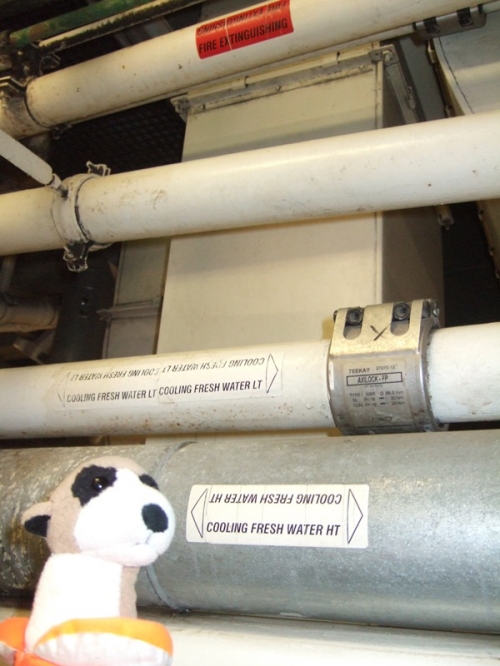
In the previous report I wrote about heavy fuel oil. How is it heated to the needed 130°C? For this a so called thermal oil plant is installed. What it is? Better Christoph explains this to you!
Christoph: The plant simply exists of a boiler in which heating coils are mounted. Through these coils thermal oil flows. On top of the boiler a burner is mounted which greats a flame and heats up the thermal oil. A pump presses the oil to the consumers: end heaters for main engine or auxiliary engines, tank heatings, room heatings (if the ship travels in colder areas) or the hot water which is consumed on board. The cold thermal oil returns via pipes to the boiler and is heated again! If the ship is on the way thermal oil is heated with the exhaust gas of the main engine – for free!. The following picture shows the burner on top of the boiler
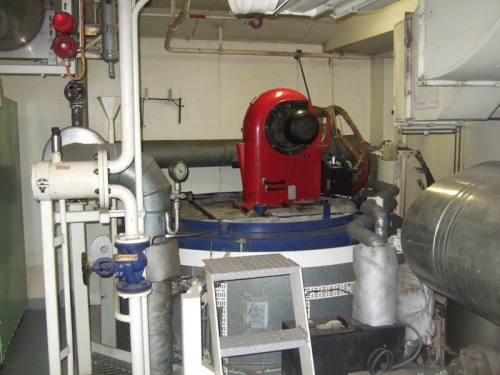
So, Christoph has been talking a lot about creating heat! But in Singapore it is warm, better it is hot! And I need in spite of more heat something I can cool down with! Well, how does it work on board a ship? To find out I made a trip into the air condition room!
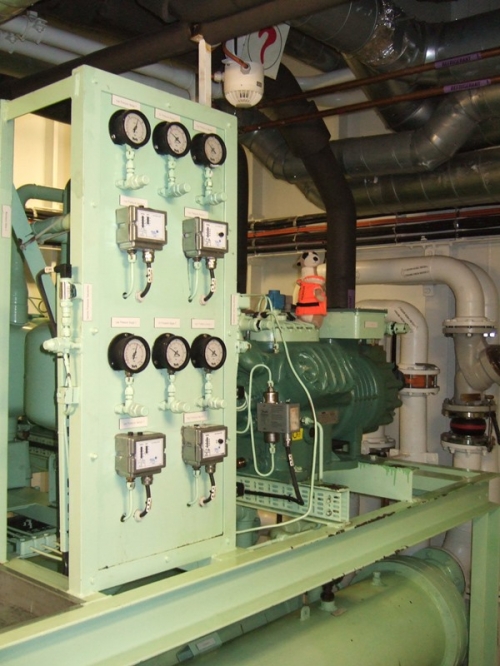
On this picture I sit on top of one of the compressors for the refrigerant! Well, it is part of the air condition unit on board the vessel! This unit supplies the cabins of the crew with cool air!
Christoph: Unfortunately in the engine room we have outside temperatures or even above! At the moment around 37°C.
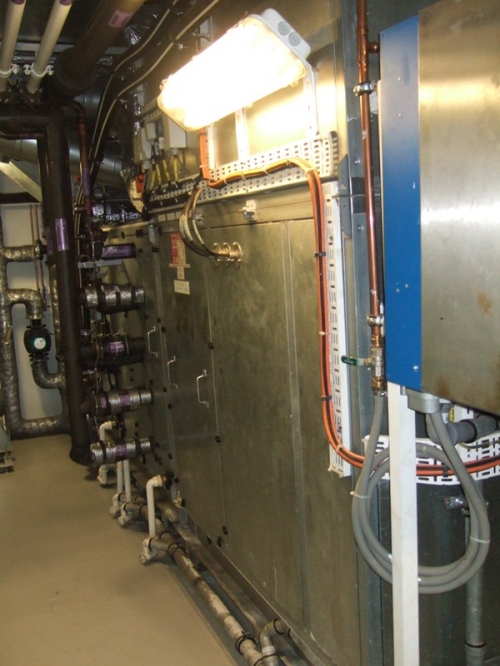
In this wonderful box the outside air is cooled down to 12°-15°C! This cold air is then blown with a huge blower and through air ducts to the cabins! At the end the air condition does the same job as your refrigerator in your kitchen – cooling down a certain amount of space. On board the ship everything is just a little bit bigger!
Uff, now I wrote a lot and I have a headache of all those technical things!
Bye for now until I write next time!
Photos
  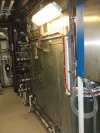   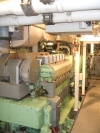 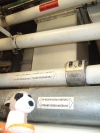  |